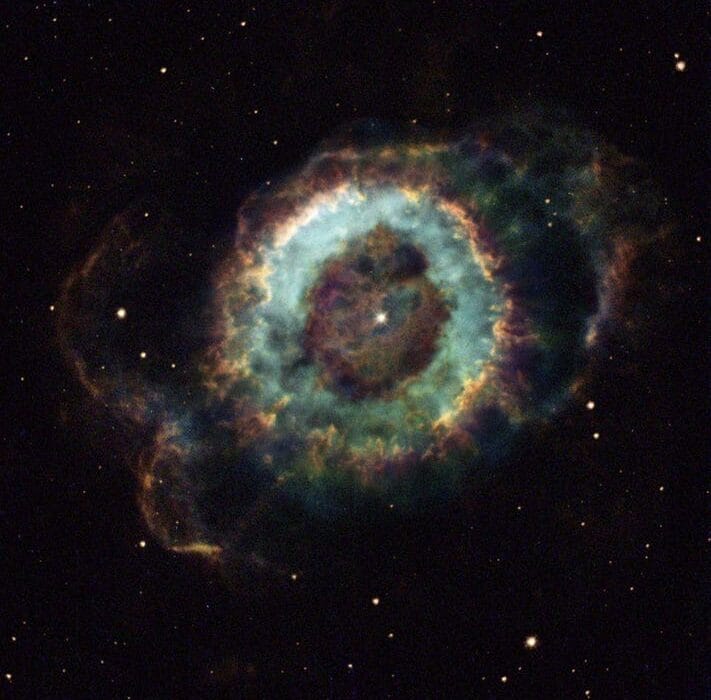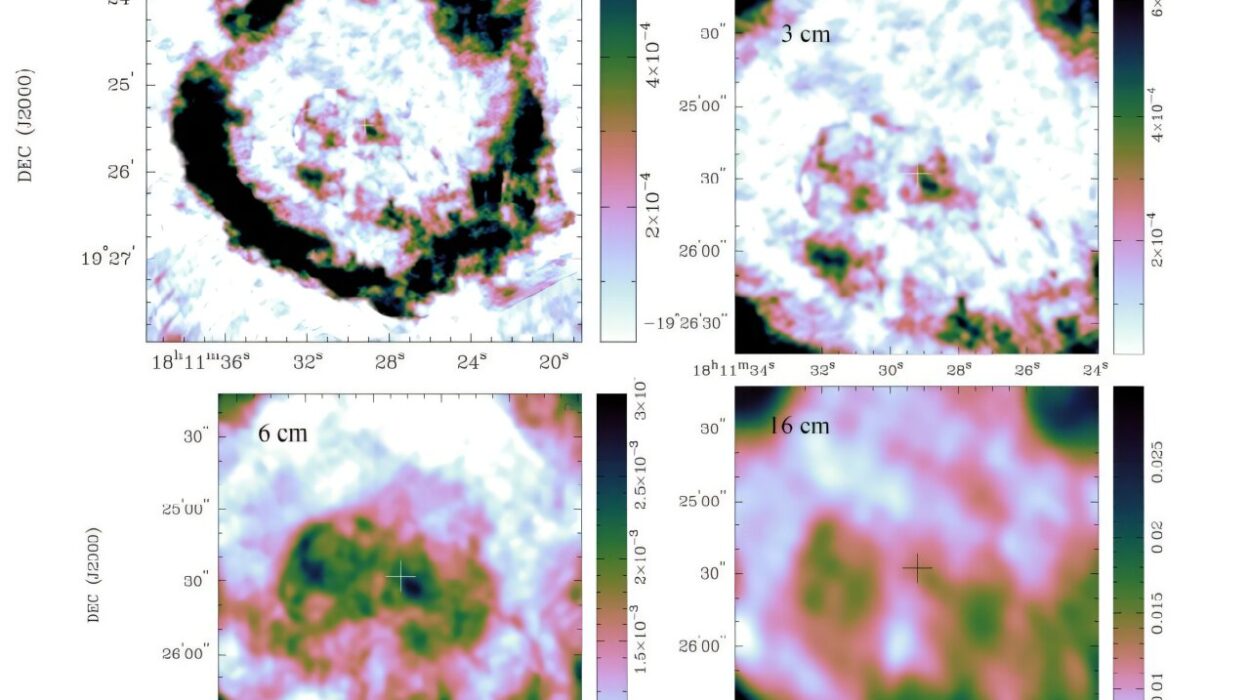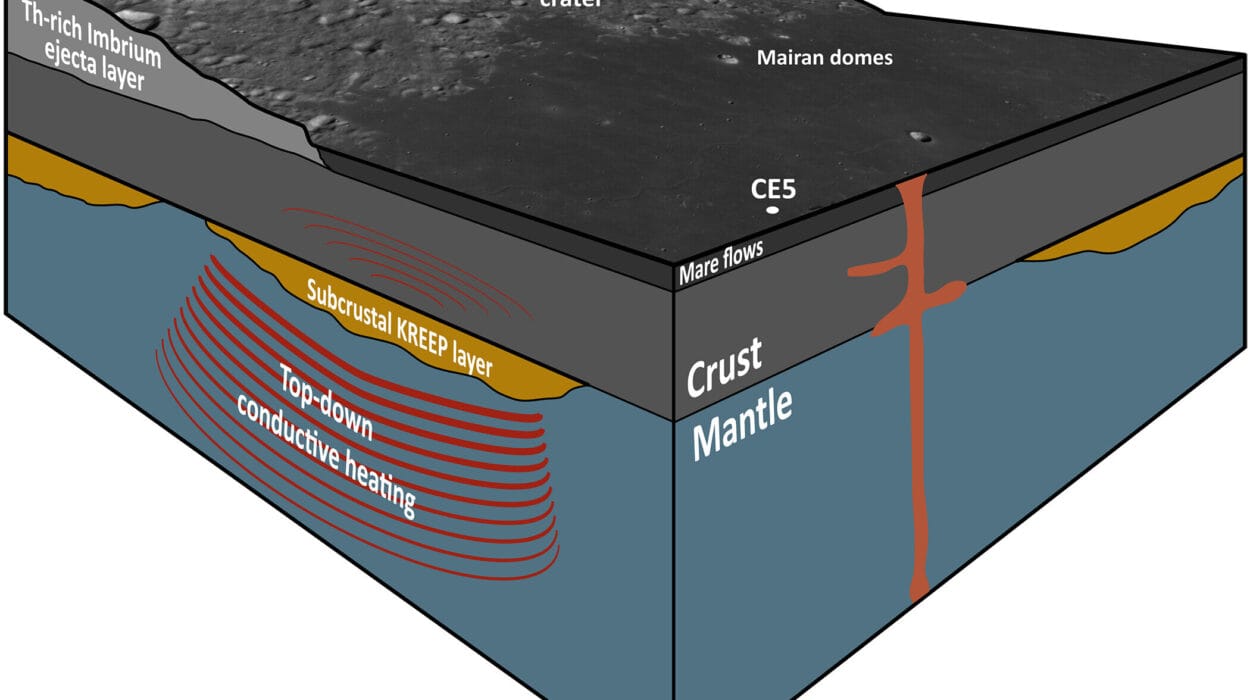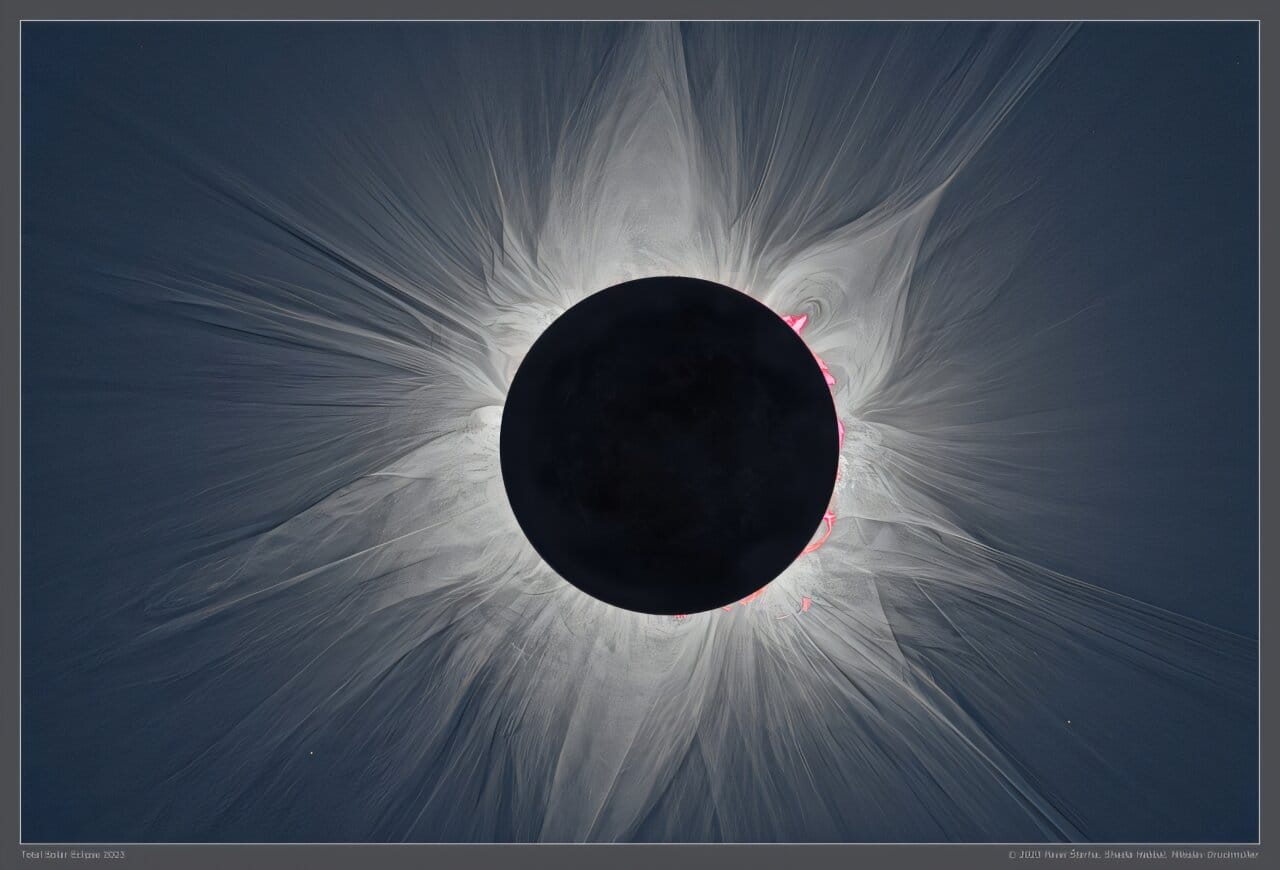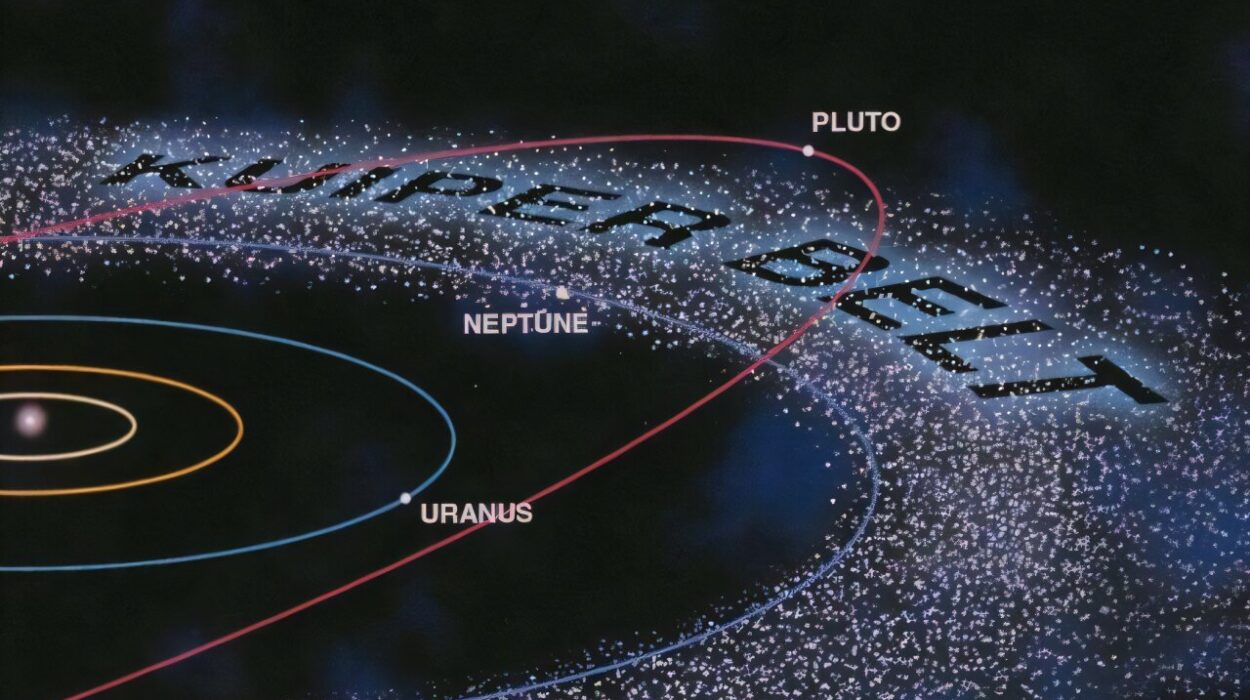On a quiet December night in 2024, as Earth rotated on unbothered by the chaos in the distant cosmos, the Asteroid Terrestrial-impact Last Alert System (ATLAS) in Hawaii caught sight of something extraordinary—an explosion blooming in the arms of the spiral galaxy NGC 3521, located some 37 million light-years from Earth. It wasn’t an asteroid or comet streaking across the sky. It was something far more ancient, more cataclysmic, and more enlightening.
A massive star had died.
Its death cry came in the form of a supernova, now designated SN 2024aecx, a burst of brilliance marking the final breath of a once-mighty celestial giant. At the time of discovery, this new supernova was shining at a magnitude of 14.68—bright enough to be detected by professional telescopes, but still faint in the grand cosmic theatre. Yet, what lay behind that flicker of light was a story of energy, transformation, and scientific detective work that would stretch the imagination and challenge existing models of stellar death.
Supernovae: Cosmic Endings That Forge Beginnings
Supernovae are not merely the explosive ends of stars; they are the engines of cosmic recycling. These luminous blasts scatter elements like oxygen, carbon, and iron into the interstellar medium, seeding the universe with the raw ingredients for future stars, planets, and even life. But not all supernovae die the same way.
Astronomers divide them into two primary categories based on their spectral signatures—the fingerprints of light they leave behind. Type I supernovae lack hydrogen in their spectra, suggesting they arise from stars that have shed their hydrogen envelopes before explosion. In contrast, Type II supernovae exhibit prominent hydrogen lines, indicating the star still retained at least some of its outer hydrogen layer.
Within these broad classes are subtypes, each with its own peculiar behaviors and implications. Type IIb supernovae, such as SN 2024aecx is now believed to be, straddle a fascinating middle ground. They start out looking like Type II, with clear hydrogen features, but these fade with time, revealing a core more akin to a stripped-envelope explosion, like a Type Ib or Ic. It’s as if these stars are dying in disguise—revealing their true nature only after the smoke begins to clear.
Confusion at First Light: A Supernova of Split Identity
When SN 2024aecx was first discovered on December 16, 2024, it had likely exploded just hours earlier—making it one of the earliest detections of a supernova post-explosion in recent history. Within a day, follow-up observations were conducted, and early spectroscopic readings appeared to confirm its classification as a Type IIb supernova.
But then came a twist. Just three days later, on December 19, a second set of observations pointed toward a completely different classification: Type Ic. These are supernovae that exhibit no hydrogen or helium lines at all and are thought to come from stars that have been completely stripped of their outer layers.
The contradiction sent ripples through the astrophysical community. How could a star simultaneously show signs of hydrogen and yet be hydrogen-poor? Was this a case of observational error, or was the star itself telling a more complex story?
To unravel the mystery, a team led by Xingzhu Zou of Yunnan University in China embarked on a detailed investigation using a combination of low-resolution spectroscopy and multi-band optical photometry. Their campaign of observation and analysis would span several weeks, revealing that SN 2024aecx was not just another stellar detonation—it was a window into the delicate balance between a star’s mass, structure, and the timeline of its collapse.
Peering Through the Light: Spectra That Whisper Secrets
The researchers’ spectroscopic studies confirmed that the initial confusion stemmed from the transient nature of hydrogen lines in SN 2024aecx. These features, though present shortly after the explosion, faded rapidly—vanishing roughly one month after the event. This disappearing act is a hallmark of Type IIb supernovae, whose progenitor stars are thought to retain only a thin shell of hydrogen before core collapse.
The early appearance of these lines hinted at a lingering hydrogen envelope, but their subsequent fading revealed the star’s true skeletal core beneath. This wasn’t a Type Ic masquerading with hydrogen, nor a classic Type II with a deep reservoir. It was a rare hybrid, shedding its outer layer like a snake’s skin before showing its core.
This phenomenon provides astronomers with a rare temporal bridge between supernova types, illustrating how even a few solar masses’ difference in the outer layers can radically alter a star’s final fireworks.
Two Peaks and a Hidden Drama
More clues emerged from the light curves of SN 2024aecx—the brightness graphs across various wavelengths over time. Uniquely, the curves revealed two distinct peaks: an initial flash followed by a brighter, longer-lasting second burst. Such dual-peaked light curves are uncommon, and they paint a dynamic picture of the unfolding explosion.
The first peak is thought to arise from shock cooling—the brief period after the star’s outer layers are superheated and illuminated by the outgoing shockwave from the collapsing core. This stage is short-lived, particularly in redder wavelengths, but in bluer bands it lasts longer and declines more slowly, indicating the energetic nature of the shock.
The second peak, by contrast, comes from the radioactive decay of nickel-56, which powers the light of most supernovae as it decays into cobalt and then iron. The absolute magnitude of this second peak was measured at -17.94, making SN 2024aecx one of the brightest Type IIb events ever observed. That brightness, however, came with a surprise—it didn’t follow the trend of longer rise times seen in similarly bright supernovae.
This deviation from the expected pattern challenges long-held assumptions about how energy release and light production scale with the mass and structure of the ejecta. It suggests a more complex interplay between the explosion energy, envelope composition, and progenitor size than previously understood.
The Energy of a Quindecillion Suns
The team’s calculations revealed that SN 2024aecx unleashed an estimated 160 quindecillion ergs of energy—that’s 1.6 x 10⁵¹ ergs, or roughly the output of 100 billion billion nuclear bombs. Despite this enormous energy, the ejecta mass—the material expelled during the explosion—was only about 0.7 solar masses.
This relatively low ejecta mass supports the notion that the progenitor star had lost most of its envelope before exploding, either through stellar winds or interaction with a binary companion. In this sense, SN 2024aecx fits the growing profile of stripped-envelope supernovae, whose progenitors are increasingly thought to be part of binary systems—where gravitational tug-of-war can peel away outer layers long before the final detonation.
Reconstructing the Star That Was
Using sophisticated modeling based on the light curves and spectral data, the team estimated that the progenitor of SN 2024aecx had a radius between 169 and 200 times that of the Sun—a size fitting for a massive, bloated supergiant star. Yet despite this enormous girth, its envelope mass was surprisingly light: just 0.03 to 0.24 solar masses.
This suggests a paradoxical structure: a star that was vast in radius but hollow in mass, like a balloon stretched thin by time. Such stars are extremely fragile, and the loss of even a small amount of envelope can alter their final fate. That razor-thin shell of hydrogen may have been all that stood between SN 2024aecx being classified as a Type IIb or a Type Ib/c.
Understanding such finely tuned mass loss is one of the most important challenges in supernova science today. It touches on fundamental astrophysical questions: How do stars die? What processes determine whether they explode or collapse into black holes? And how do binary companions or stellar winds sculpt the final moments of a massive star’s life?
A Supernova as a Time Machine
In studying SN 2024aecx, astronomers have effectively gazed into a cosmic time machine. Light from this explosion traveled for 37 million years before reaching Earth—meaning it occurred when the first primates were just beginning to swing through African trees. That it happened in NGC 3521, a dusty, complex spiral galaxy like our own, adds a layer of poignancy: this could very well be the kind of event our own Sun’s far more massive cousins will experience someday.
The speed at which this supernova was discovered and followed up is a testament to the growing prowess of global sky surveys like ATLAS and the rapid-response capabilities of modern telescopes. It demonstrates how, by catching these events in their infancy, we can tease apart the fleeting signatures that fade in days or even hours—and glean insights that would otherwise be lost forever.
A Cosmic Puzzle, Partially Solved
The case of SN 2024aecx is more than just an astronomical curiosity. It is a natural experiment—a rare, well-timed observation of a star’s last stand that straddles the line between theoretical models. Its peculiarities challenge the existing taxonomy of supernovae and remind us that nature often resists our tidy categories.
In piecing together the life and death of this one distant star, scientists gain tools to understand others like it—and perhaps, eventually, to write a universal story of how stars end their lives, how matter is recycled in the universe, and how even destruction can be a source of cosmic creativity.
As astronomers continue to monitor SN 2024aecx and similar events, each data point adds a brushstroke to the portrait of stellar death. In the grand scheme, every supernova is both an ending and a beginning—a light that burns briefly but reveals the deepest truths of the universe.
Reference: Xingzhu Zou et al, SN 2024aecx: A double-peaked rapidly evolving Type IIb supernova at 11 Mpc, arXiv (2025). DOI: 10.48550/arxiv.2505.19831

